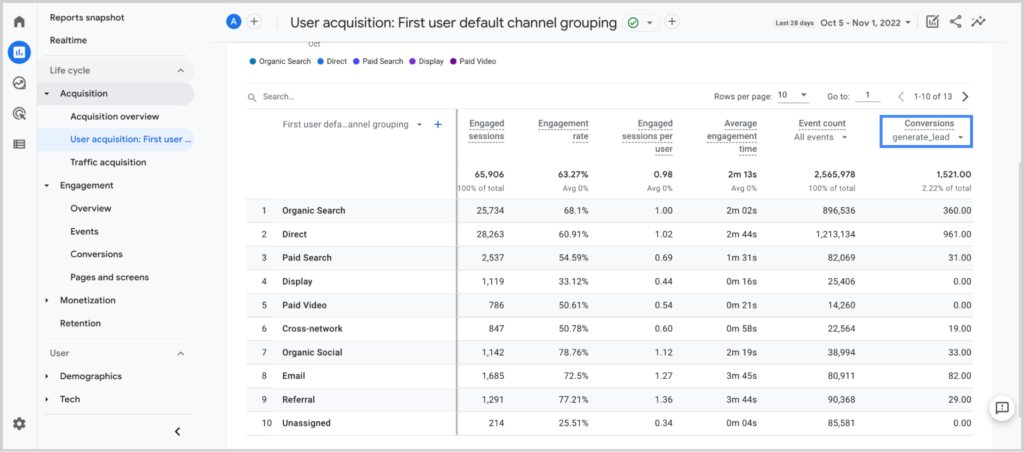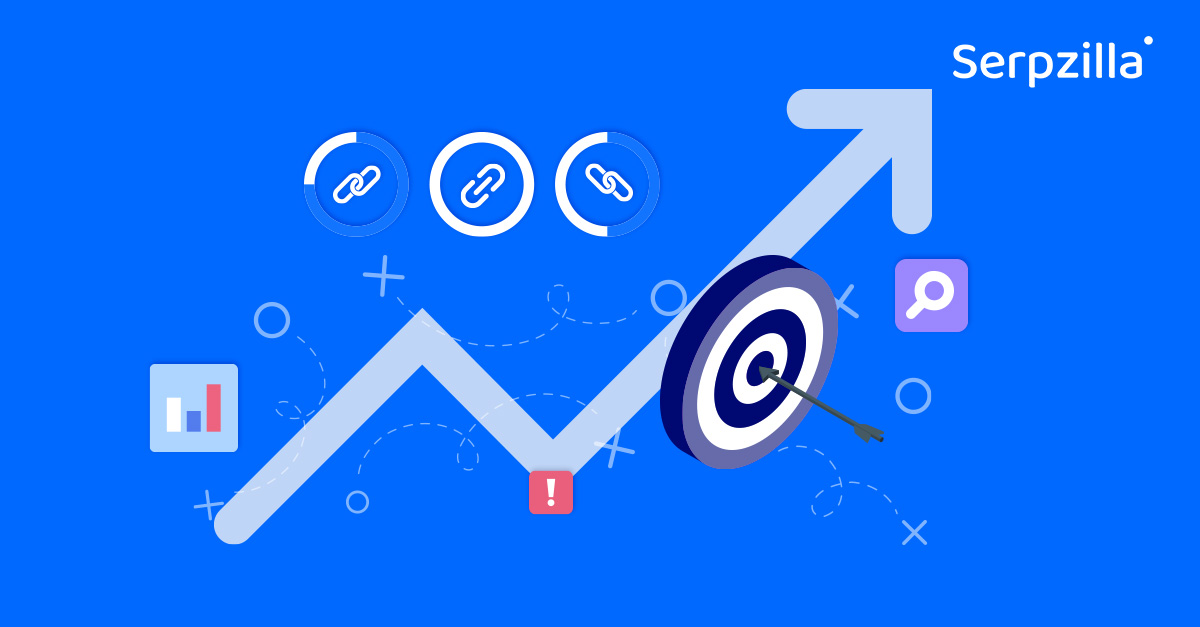SEO is about adjusting different aspects of a website so it shows up in search engines. You make edits and tweaks to improve its ranking in search results. The goal is to make the site more visible.
At Serpzilla, we are certain that SEO today is more important than ever.
SEO is essential for attracting potential customers. It helps users find your site more easily. Greater visibility drives more relevant traffic to your site. Increased traffic, in turn, boosts conversion chances.
The Role of SEO in Lead Generation
SEO helps users navigate the digital ocean – rather a vast one – to find you, or, more accurately, your site. It is the same as a lighthouse guiding ships to the land. Without SEO, your lighthouse is shrouded in fog. Nobody’s going to see it.
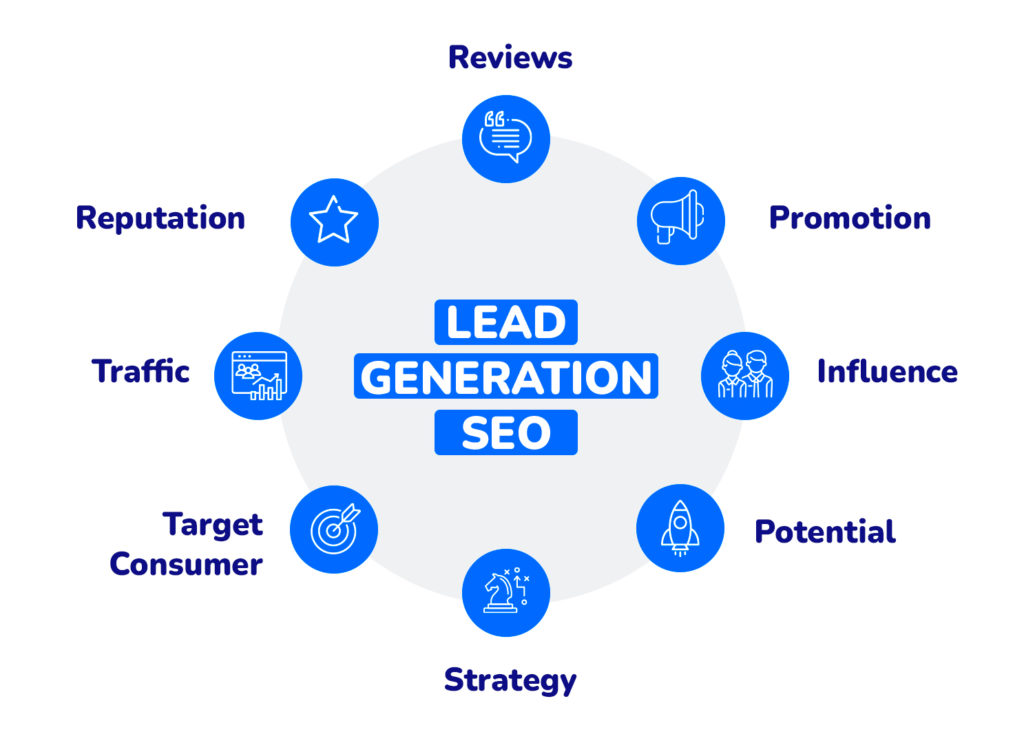
Why SEO is Crucial
SEO, when done correctly, attracts users searching specifically for your products or services. It places a spotlight on your business. Optimize for relevant keywords, and you’ll see that your site will become visible when users need it the most.
Examples and Integration
Imagine a blog post on “best eco-friendly products”. It is aimed at users interested in green solutions. But it’s a rather vague description. You need to picture the audience better in your mind. Who are they? Old or young? Are they singletons or do they have a large family? Are they male or female? What needs do they have? What keywords are relevant to those needs?
After that, you’d need to integrate SEO with your marketing strategy like a perfect and fresh ingredient in a recipe. It should combine social media, email campaigns, and content marketing – all to create a comprehensive lead-generation strategy.
- Identify target audience: Understand their needs and search habits. Be specific about it.
- Optimize for relevant keywords: Align content with user intent.
- Integrate SEO with other strategies: Use alongside social and email marketing.
How to Optimize Your Website for Lead Generation
Have you ever tuned a guitar? Or a piano? You carefully tune an instrument and then try it out to see how it sounds. Optimizing a website is almost the same thing. At Serpzilla we often do it for our clients, and we have learned that each tuning provides a smoother experience and better results. Tweak and test – that’s the gist of it.
Think of the appreciative audience and the money you can make by selling tickets to your ‘gigs’—aka your products or services. On the other hand, if your SEO is done incorrectly, you will attract an audience that is not a good fit for your product. Imagine a group of Generation Z members being lured to a gardening event aimed at the older generation. They’ll be annoyed and won’t buy anything.
Technical SEO Best Practices
Site Speed Optimization
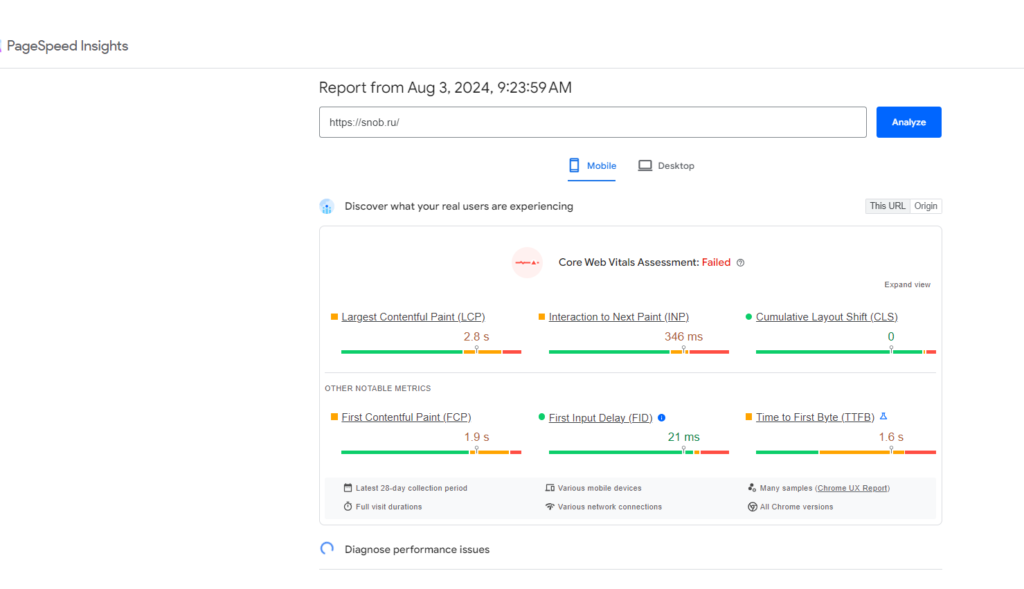
A fast site retains visitors and reduces bounce rates. Faster speeds mean better performance. Tools like Google PageSpeed Insights help identify and address speed issues. For instance, compressing images and minifying CSS can significantly boost load times.
- Use Google PageSpeed Insights: Analyze and improve site speed.
- Optimize images: Compress and resize for faster loading.
- Minify CSS/JS: Remove unnecessary code for better performance.
Mobile Optimization

A site must be mobile-friendly to really become popular. This means it needs to easily adjust to different screen sizes. This is understandable, considering more than half of the traffic comes from mobile devices. You can examine your site’s mobile responsiveness by using Google’s Mobile-Friendly Test.
- Check mobile responsiveness: Use Google’s Mobile-Friendly Test.
- Optimize touch elements: Ensure buttons are easy to click.
- Use responsive design: Adapt content for various screen sizes.
Secure and Accessible Website
A secure site builds user trust and supports higher rankings. Think of HTTPS as locking the door to protect your visitors. What is an accessible site concerning that? It means everyone can navigate it easily no matter what. Use special tools for when your links are broken and you need to fix them. For example, Screaming Frog helps find and fix broken links, which improves site accessibility.
- Implement HTTPS: Secure your site with SSL.
- Check accessibility: Use tools to ensure usability for all.
- Fix broken links: Regularly update and correct errors.
Keyword Research
In Serpzilla, we pay great attention to keywords. We can’t stress it hard enough: keyword research is extremely important! It reveals what users are searching for. Keyword research is what should guide your content strategy. Use tools like Google Keyword Planner, Moz Keyword Explorer, Semrush, and Free Keyword Research Tool to discover valuable keywords to attract potential leads.
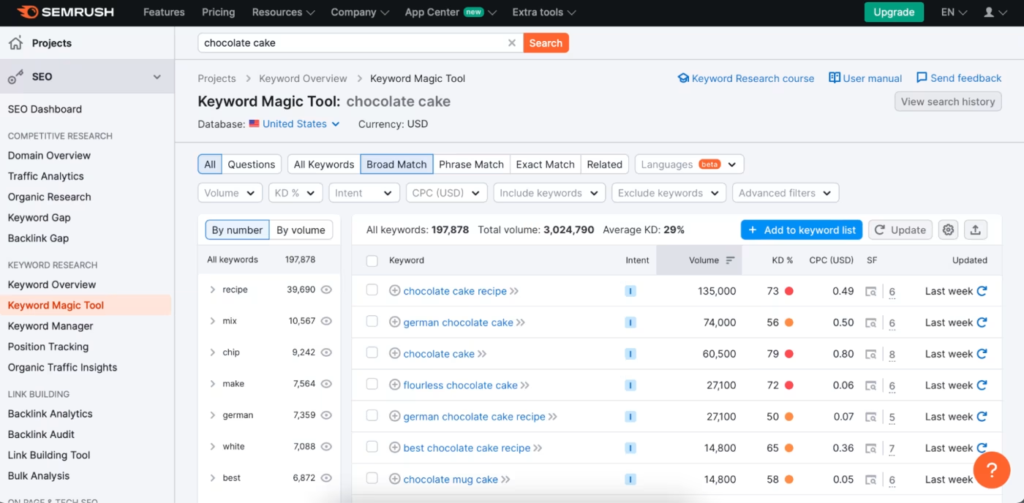

- Identify core topics: Start with broad industry terms.
- Use keyword tools: Analyze search volume and competition.
- Focus on user intent: Choose keywords reflecting user needs.
Examples and Implementation
Focus on specific, high-intent keywords! It will drive more qualified traffic to your site. Don’t use popular but irrelevant keywords like they did in the 2010s.
- Discover relevant keywords: Use Google Keyword Planner and other tools.
- Analyze keyword competition: Use tools to assess difficulty.
- Update keyword strategy: Regularly refine based on performance.
On-Page SEO Techniques
Properly arranged products draw more customers in. Here’s how to set up your digital storefront for optimal visibility.
Effective Use of Keywords
Integrate keywords naturally into content and meta tags. Avoid overstuffing, which can harm readability.
Keywords are signposts that guide users to your content. Use them strategically in headings, body text, and meta descriptions.
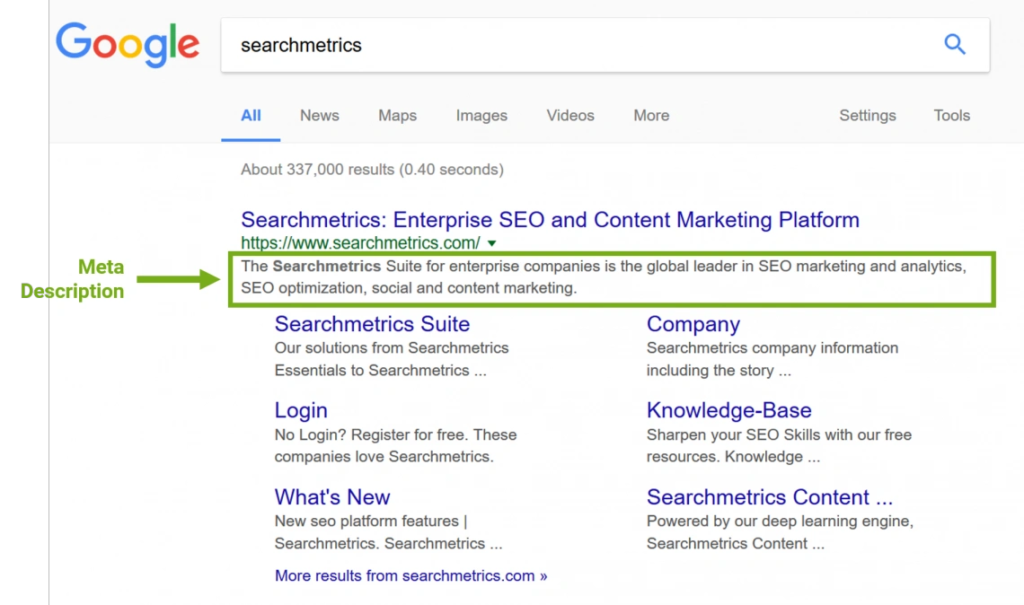
- Place keywords strategically: Use them in headings and body text.
- Craft compelling meta descriptions: Include primary keywords.
- Optimize title tags: Create engaging and keyword-rich titles.
Structuring Content for Featured Snippets
Featured snippets are important for search results. They’re like the best spots in a store window. Structure your content to answer the FAQ clearly and concisely.
- Answer common questions: Provide clear, concise responses.
- Format content for snippets: Use bullet points or lists.
- Optimize for questions: Target questions users frequently ask.
Importance of Meta Descriptions and Title Tags
Meta descriptions and title tags are your site’s first impression. They act as a book cover, enticing users to click. Craft concise and compelling tags that include primary keywords for better click-through rates.
- Write relevant meta descriptions: Keep them under 160 characters.
- Optimize title tags: Use primary keywords and keep them under 60 characters.
- Test and revise: Regularly update for improved click-through rates.
Off-Page SEO Techniques
We often say that off-page SEO is the same as building a good reputation in a community. Get quality backlinks, and they will enhance your site’s authority in the eyes of the search engines. Think of backlinks as endorsements from other reputable sources that vouch for your content.Building Backlinks
Backlinks from authoritative sites boost your site’s credibility. Engaging in guest blogging and digital PR can help. Write several guest posts on a well-known industry blog, and it will earn you valuable backlinks, and drive more traffic to your site. Alternatively, companies can outsource link-building to Serpzilla or another link-building platform.
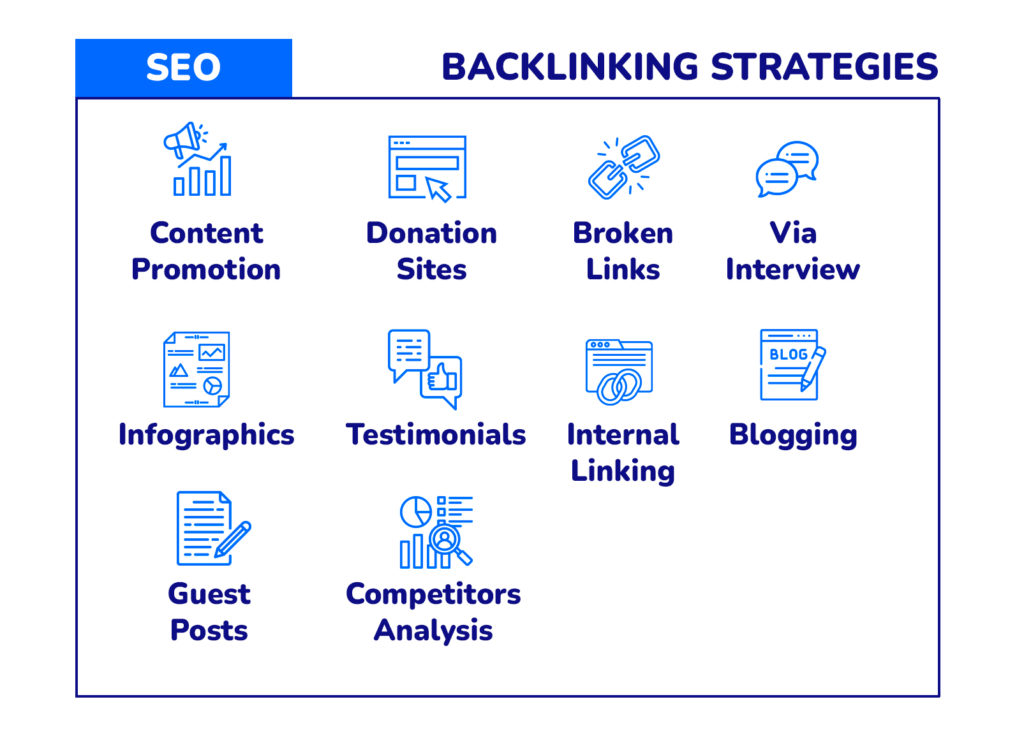
- Pursue guest blogging opportunities: Write for reputable sites.
- Engage in digital PR: Promote your content to media outlets.
- Build relationships: Network with industry influencers.
Social Media Engagement
Social media shares amplify your content’s reach. Regularly post and interact with users on platforms like Twitter and LinkedIn to enhance visibility. Engaging with your audience builds trust. It also increases brand recognition.
- Share content regularly: Post updates and engage with followers.
- Participate in conversations: Join relevant discussions on social media.
- Use social media ads: Boost posts to reach a larger audience.
Content Marketing Strategies for SEO
Content marketing is like crafting a captivating novel: people can’t stop talking about it, making others want to read it too. Quality content draws readers in and keeps them engaged. Here’s how to do so to capture attention and generate leads.
Creating High-Quality Content
High-quality content acts as your best salesperson. Create informative articles that address user needs and provide valuable insights. But first, think about what is it the user wants.

- Conduct thorough research: Ensure content is accurate and insightful.
- Write engaging headlines: Capture attention with compelling titles.
- Update content regularly: Keep information current and relevant.
Examples of Content Success
A well-researched case study provides deep insights and attracts industry professionals. Regular updates ensure that your content remains relevant, such as refreshing blog posts to reflect recent industry changes.
- Develop case studies: Showcase successful projects or client results.
- Refresh old content: Update articles with new information.
- Monitor content performance: Use analytics to gauge effectiveness.
Content Promotion Techniques
Promoting content is like hosting a grand opening event. It’s all about spreading the word and inviting guests. Use multiple channels to maximize visibility and attract a larger audience.
Effective Promotion
- Use Social Media: Share and interact with your followers.
- Leverage Email Marketing: Send newsletters with content links.
- Collaborate with Influencers: Expand your reach through influential partners.
Examples and Implementation
Share engaging posts on platforms where your target audience is active. For example, use LinkedIn for B2B content and Instagram for lifestyle content. Collaborating with influencers can significantly amplify your message and drive more traffic.
- Promote on relevant platforms: Use channels suited to your audience.
- Email newsletters: Send regular updates with valuable content.
- Partner with influencers: Amplify your content through trusted voices.
Local SEO Lead Generation Methods
Local SEO means virtually putting up a sign in your neighborhood. It helps local customers find your business with ease. Optimize for local searches to attract leads within your geographic area.
Google My Business
Claim and optimize your Google My Business listing. Think of it as your business’s online storefront. Include accurate details, photos, and actively engage with customer reviews to enhance local visibility.
- Claim your listing: Ensure all business details are accurate.
- Add photos: Include images to attract local customers.
- Respond to reviews: Engage with customer feedback promptly.
Local Keywords
Incorporate local terms into your content and meta tags. Phrases like “best pizza in [city]” target local searches effectively. This improves your chances of appearing in local search results and attracting nearby leads.

- Use local keywords: Add city names and neighborhoods.
- Optimize local content: Write articles relevant to your location.
- Update local citations: Ensure consistency across directories.
Local Citations
List your business in local directories and review sites. Consistent NAP (Name, Address, Phone Number) information helps boost local rankings. Ensure your details match across all platforms, like Yelp and Yellow Pages, for better local SEO performance.
- Submit to local directories: List your business on relevant sites.
- Maintain NAP consistency: Ensure accurate details across platforms.
- Monitor citations: Regularly check and update your listings.
Tracking and Analyzing Your SEO Success
Tracking SEO success ensures you’re on the right path. Use analytics to monitor performance and refine your strategy.
SEO Rank Tracking
Tools for Tracking
Track rankings with tools like Google Search Console. Ahrefs and SEMrush offer in-depth analysis and historical data. For instance, Ahrefs provides a comprehensive view of keyword positions and competitive metrics.
- Set up tracking tools: Use Google Search Console, Ahrefs, SEMrush, or other tools.
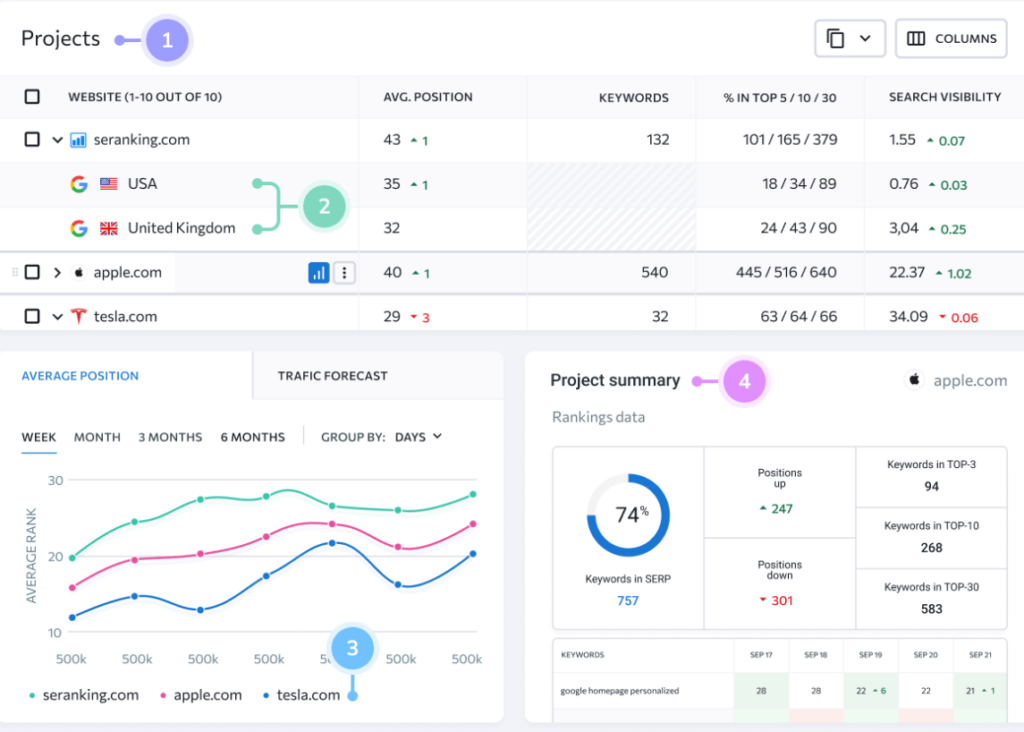
2. Monitor keyword rankings: Regularly check and analyze positions.
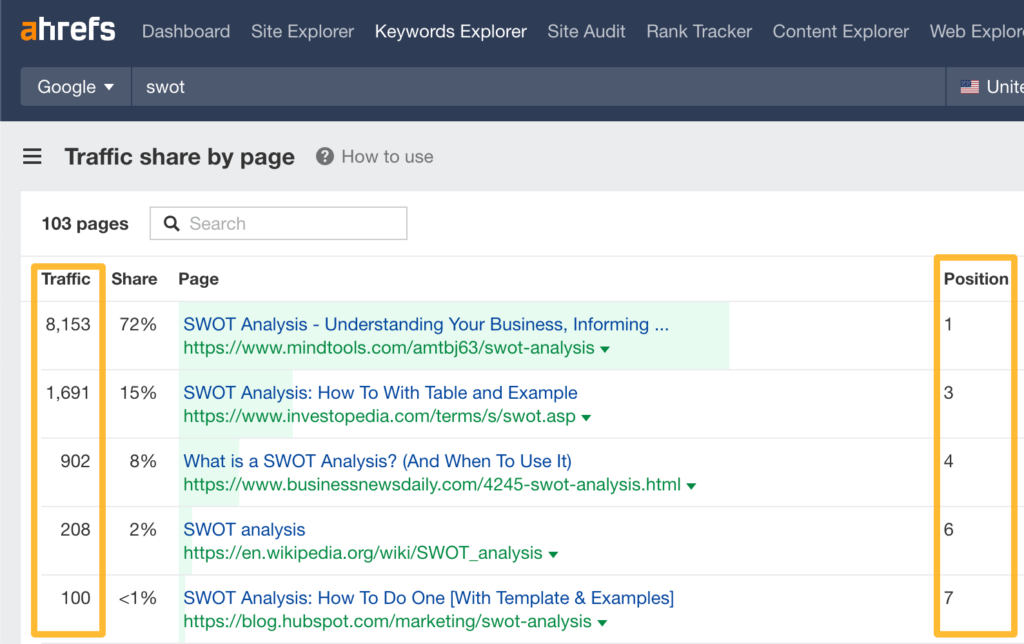
3. Adjust strategies: Refine tactics based on ranking data.
Importance
Regularly check rankings to measure SEO effectiveness. Monitoring helps you understand which strategies are working and where adjustments are needed.

- Review ranking reports: Identify high and low-performing keywords.
- Analyze trends: Look for patterns in ranking changes.
- Optimize based on data: Make adjustments to improve rankings.
Website Traffic Checker
GA4 for Traffic Analysis
Google Analytics 4 (GA4) tracks traffic sources and user behavior. It’s like having a detailed map of your visitors’ journeys. Analyze where traffic comes from and how users interact with your site. Google Analytics gathers data from your websites and apps. Data first appears in the Realtime report. Then it shows up in other reports soon. Some data is collected automatically after setup. Other data requires additional setup steps.
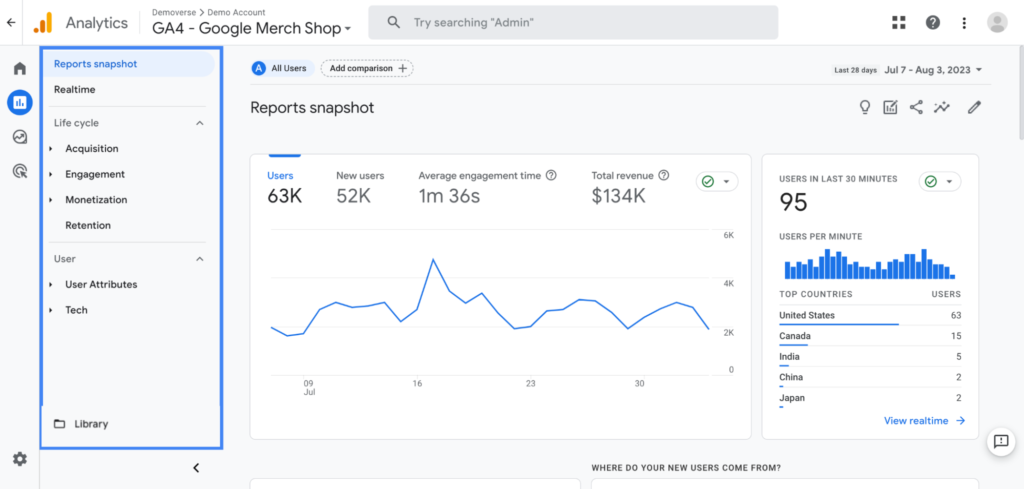
You can get two types of reports from GA4:
Overview reports, i.e. reports that summarize data about a specific topic; for example, your in-app purchases.
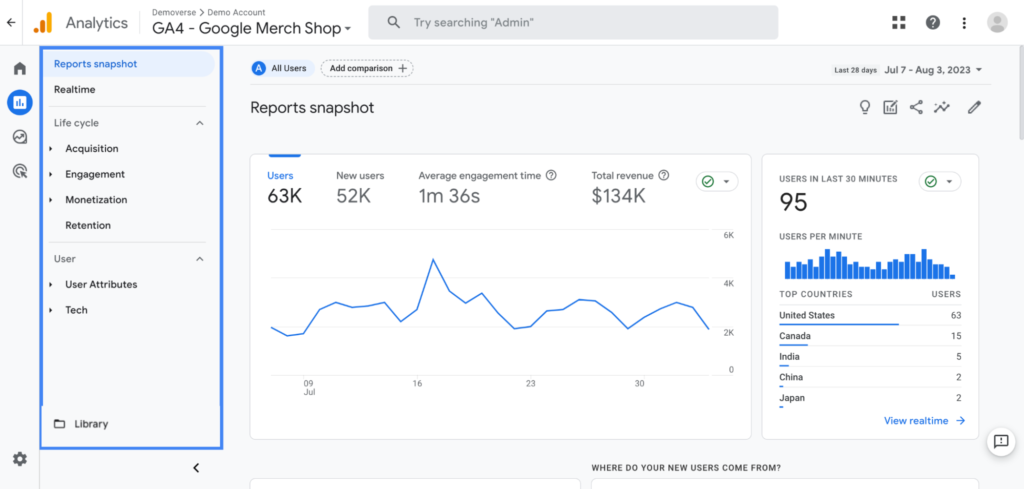
Detail reports, meaning the ones that provide detailed and in-depth information about an area of interest.

- Set up GA4: Implement the latest Google Analytics version.
- Track traffic sources: Identify where your visitors come from.
- Analyze user behavior: Review how users interact with your site.
Importance
Tracking traffic helps measure SEO impact and refine strategies. Understand user behavior to enhance engagement and conversions. Knowing which sources drive traffic helps optimize your SEO tactics.
- Monitor traffic patterns: Use GA4 to track changes over time.
- Analyze engagement metrics: Review bounce rates and session durations.
- Optimize based on insights: Adjust strategies based on traffic data.

Conversions and Key Events in GA4
Tracking Conversions
Many Google Analytics reports include a Key events column. Reports like Landing pages and User acquisition are examples. The Key events column displays user-triggered events. It separates counts by dimension values on the left.
To narrow down counts, use the All events menu. Choose a specific key event to see its count. Set up “key events” in GA4 to monitor specific actions. This helps you track form submissions or purchases. For example, setting “an event” for users to complete a contact form measures lead generation effectiveness.
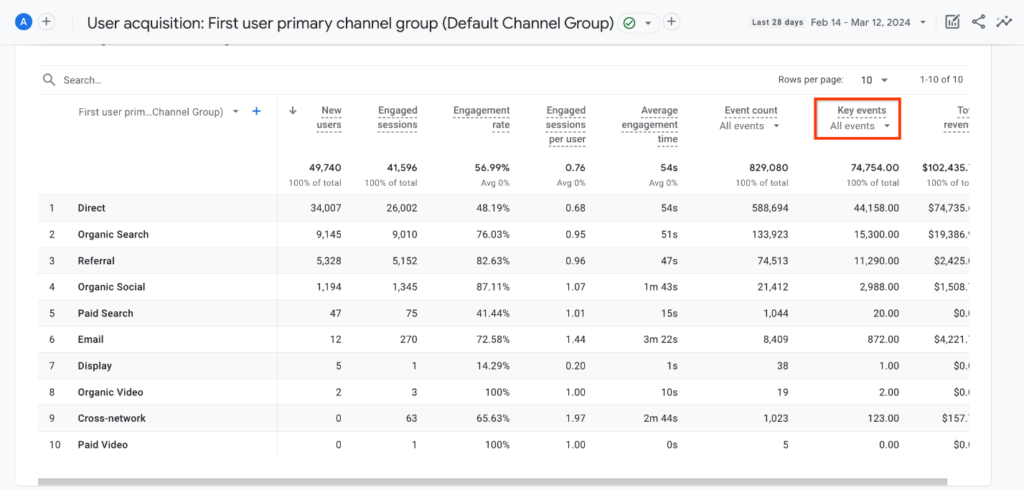
- Define conversion goals: Set specific events to track.
- Monitor conversion rates: Evaluate the effectiveness of your lead generation.
Tracking conversions measures the success of your lead generation efforts. Analyze data to identify successful strategies and areas for improvement.
- Review conversion reports: Analyze which goals are met.
- Evaluate goal performance: Identify areas for improvement.
Refine lead strategies: Adjust tactics based on conversion data.
